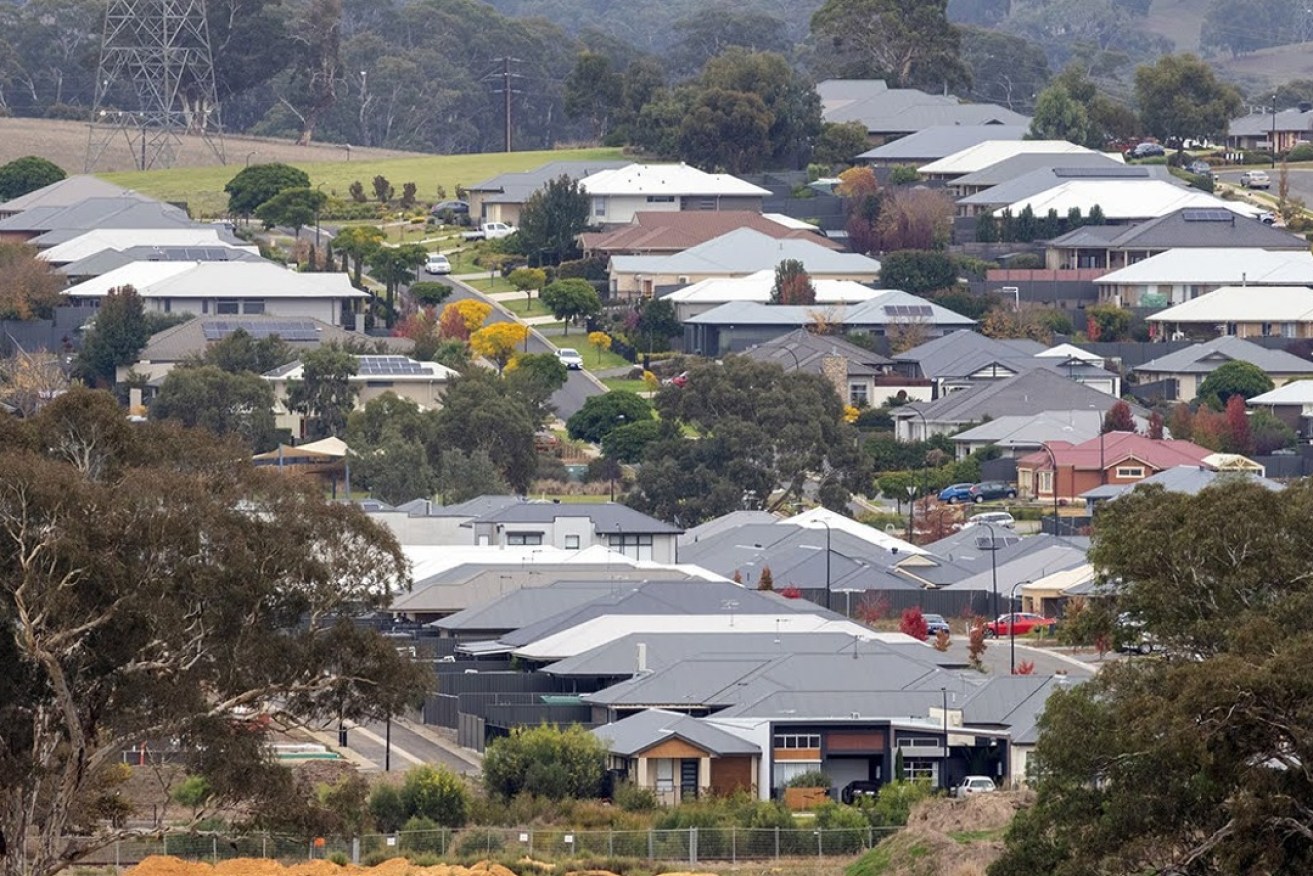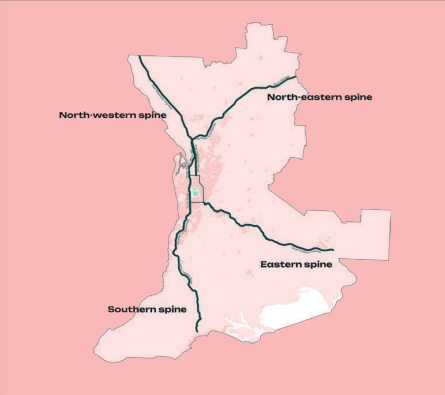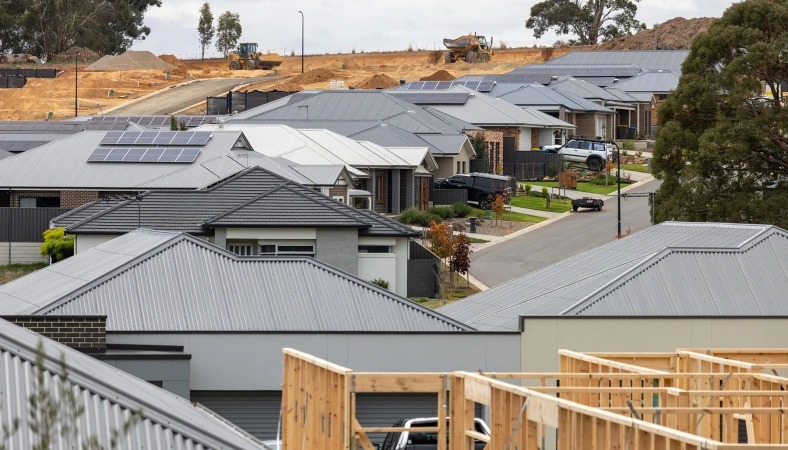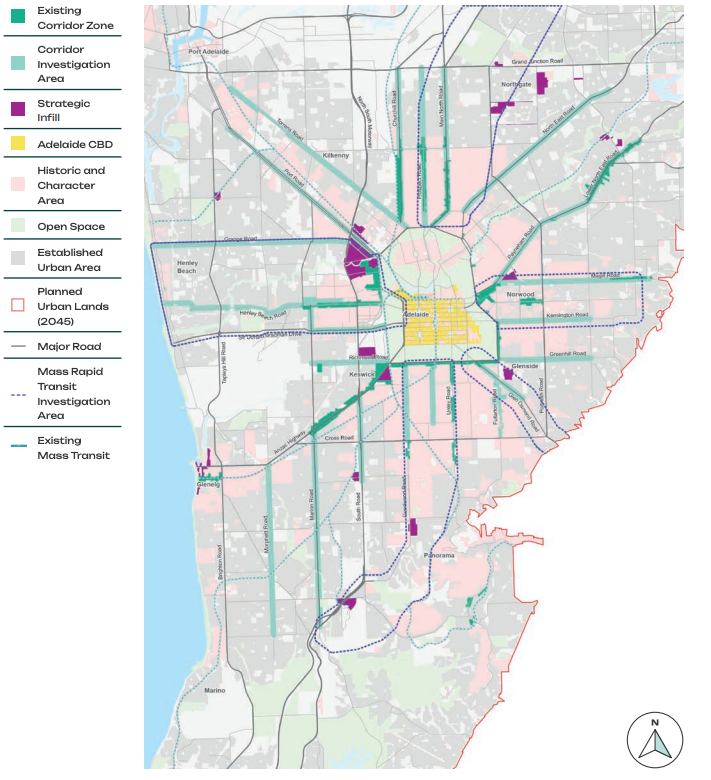‘Learn from Mount Barker’: Govt warned on new Greater Adelaide plan
Better infrastructure coordination and more housing development closer to the city should be the focus of the next 30-year plan for Greater Adelaide, Mount Barker council says, warning that it is “imperative” the failures of the 2010 Mount Barker rezoning are not repeated.


The state government has exempted new housing in Mount Barker growth zones from a national energy efficiency building code coming into effect next year. Photo: Tony Lewis/InDaily
Mount Barker District Council on Tuesday endorsed a formal response to the State Planning Commission’s discussion paper on the development of the 2024 Greater Adelaide Regional Plan (GARP).
The discussion paper, released in August, identifies a need to find space for another 100,000 new homes in Greater Adelaide by 2051.
It does not, however, propose any additional housing growth in Mount Barker, noting the “significant” growth the Hills town has experienced since the Rann Government in 2010 controversially rezoned 1300 hectares of local farmland for new housing.
The council submission points to numerous challenges Mount Barker continues to face due to the 2010 rezoning, namely infrastructure “pressures” and public transport “shortcomings”.
“The community is aware of the benefits that come with growth,” the submission states.
“But as much of Mount Barker is left experiencing the shortcomings of a misalignment of development with infrastructure, it is imperative that the Commission learn from this in designating new areas for expansion.”
The Planning Commission has proposed investigating housing growth in outer-suburban/satellite areas including Kudla, Roseworthy, Two Wells, Murray Bridge, Victor Harbor and Goolwa as part of the 2024 GARP.
The proposed investigation areas are along Adelaide’s four major road spines that stretch south, east, northeast and northwest.

A map of the road transport spines identified as investigation areas for housing growth. Image: PlanSA
Mount Barker council raised concerns that there “does not appear to be sufficient emphasis on development closer to Adelaide city”, adding: “The GARP appears to preference greenfield development over infill.”
“There’s clearly been a shift, and I understand why the state has done it because infill is very challenging and I can see that there is a housing crisis,” Marc Voortman, council’s general manager of planning and community, told InDaily.
“Our council has always said we’re not against growth, and as an outer metropolitan area council we understand that that growth is going to be greenfield growth.
“We just want to see that that work is done in an orderly fashion and that there’s appropriate infrastructure plans in place to help guide that development.”
Voortman said there are “a lot of lessons to be learnt from Mount Barker” and infrastructure planning should be “a key part of any rezoning process and its essential to do that upfront and early”.
He said urban infill – new housing in established urban areas – was still a part of the 2024 GARP but the council wants more emphasis on it given the transport issues it has experienced with greenfield housing.
“If we’re going to keep pushing out and we don’t have mass transit or public transport options or that corridor to the Adelaide CBD… we’re going to continually be confronted by a population that has long commutes and we have infrastructure challenges on the way to get those people into town,” he said.
Around 60 per cent of Mount Barker council’s population commutes to the city every day, said Voortman, who argued this strengthens the case for a greater focus on infill.
“We want to see more local employment options and infill provides that opportunity for people to be closer to the core infrastructure like transport, train, rail, and provide the state with an opportunity for more people living close to where the infrastructure is already,” he said.

Housing in Mount Barker. Photo: Tony Lewis/InDaily
The original 30-Year Plan for Greater Adelaide in 2010 set a target for 70 per cent of new housing to be urban infill versus 30 per cent greenfield. This was revised to a more ambitious 85/15 ratio in 2017.
The council submission criticises the Malinauskas Government’s decision to scrap these targets, arguing that without them “it is difficult to see how the themes and concepts of the plan will be measured”.
Ironically, it was the original 2010 plan that earmarked Mount Barker as a new strategic growth area as part of a broader target to add 10,650 hectares of net land supply into the Adelaide housing market.
The discussion paper for the 2024 plan says Mount Barker will continue to grow as a satellite city “within the current growth boundary provided by the 30-Year Plan”.
“As this growth continues in the coming 10 to 15 years no additional growth is planned,” the government paper states.
“This will allow for a period of consolidation, as significant infrastructure and city shaping projects, such as the town centre upgrade, are rolled out to support the growing community.
“However, any infrastructure planned over this period should take a strategic view, with a view to potential further growth over the long term.”
There are still nearly 3700 “development-ready” allotments within the Mount Barker Growth Area, according to Planning Commission data, and a further 7000 allotments available on undeveloped rezoned land.
Only around 20 per cent of the 2010 growth area rezoning has been redeveloped to date, Voortman said.
“For that reason, we gave some pretty clear feedback to the State Planning Commission and the State Government that we’ve got a lot of capacity here,” he said.
“There’s about 30-years of land supply in Mount Barker still ahead of us.”
In response to questions from InDaily about the council’s submission, Planning Minister Nick Champion said: “There have been many lessons learned from the shortcomings of Mount Barker and as a government we strive to prevent them from occurring again.”
He pointed to the establishment earlier this year of the government’s Housing Infrastructure Planning and Development Unit – a five-person group tasked with coordinating infrastructure investment for suburban housing developments – as part of the government’s commitment “to plan and prevent future failures”.
“The GARP has deliberately allowed the township of Mount Barker a period of reprieve with no additional growth fronts planned at present,” Champion said.
“This decision has been made to allow the growth experienced to settle and infrastructure and services to catch up. Once this has occurred, additional growth can happen in a sensible, planned, and structured manner.”
Champion has previously denied that the 2024 GARP discussion paper puts extra emphasis on satellite township extensions over infill development, highlighting a “substantial” number of major development sites in inner-city suburbs like Hindmarsh, Thebarton and Keswick that are identified in the discussion paper.

Inner-city housing development opportunities (purple) identified in the discussion paper.
“The GARP was designed to commence conversations about how and where we grow as a State, and the Government wants South Australians to approach this discussion with a fresh lens and without the preconceptions of the binary ‘Greenfield versus Infill’ debate,” the Planning Minister said today.
“The nation is currently in a housing crisis, and we need to examine a range of growth options and strategies – these are included in the GARP to challenge those preconceived ideas and to ventilate the impacts and effects of the policy settings which will define our state’s settlement patterns.
“This includes greenfield, but it also extends to general infill and strategic infill – with priority sites identified like Keswick, the West End Brewery Site and Hindmarsh all offering unique opportunities in the metro area to increase density on the fringe of the CBA as master planned transport-oriented developments.”
Consultation on the GARP discussion paper ends on November 6.




